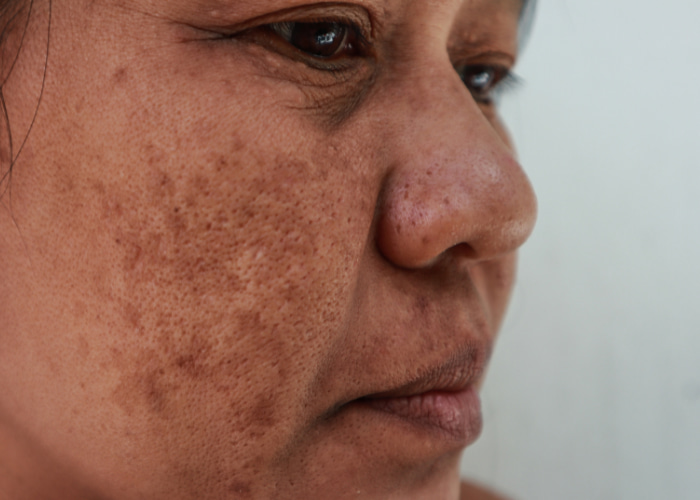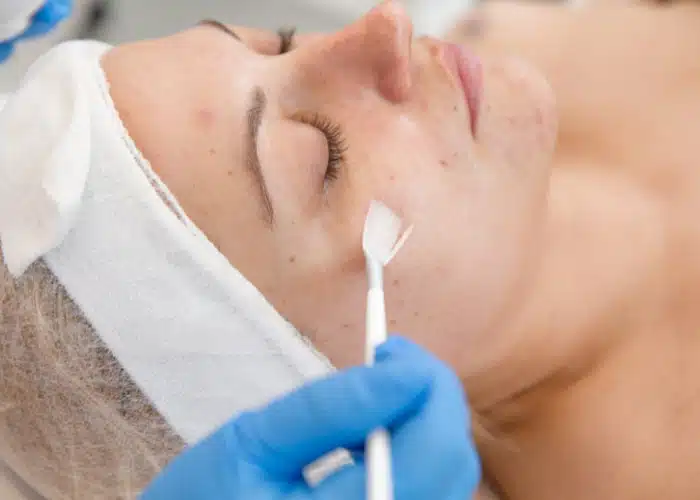If the skin on your face or some other visible area of your body seems dotted with unsightly brownish or blueish patches, you may suffer from a common but potentially embarrassing hyperpigmentation condition known as melasma. The more you understand about this condition, the more effectively you can seek the appropriate treatment to get it under control. Let's examine melasma's causes, symptoms, triggers, and available treatment options.

Melasma literally means "dark spot." It is classified as a hyperpigmentation disorder, not some kind of cancer or pre-cancer. Depending on whether you have epidermal, dermal, or mixed melasma, you may see brown, gray, or blue-tinged patches on your skin. commonly affected areas include the forehead, upper lip, chin, and nose. However, it can also spread across your back, neck, or arms if you regularly expose those areas to sunlight.

Hormonal changes or imbalances can cause or contribute to melasma. Changes in your estrogen or progesterone levels often bring it on, which is why you may hear it referred to as the "mask of pregnancy". Thyroid hormone levels can also play a role in its development.
UV exposure is a major trigger for melasma. Both natural sunlight and tanning lamps can make characteristic skin patches appear. Medications that boost your sun sensitivity could make you even more vulnerable, just as hormone treatments or birth control drugs can. Other potential causes involve cosmetics, skin irritants, and inherited factors. While the condition usually occurs in women, men can develop it as well.

Melasma symptoms can range from small spots of discoloration to large discolored patches. These areas can appear brown, gray, blue, or any combination of these colors. Darker-skinned individuals tend to experience more severe discoloration due to their skin's extra melanin pigment.
Melasma spots tend to be larger than freckles or liver spots. They also lie flat instead of raised, unlike some moles or cancerous lesions. Even so, you should have your skin checked to confirm that you don't have a lookalike condition that might require medical treatment. Melasma doesn't cause itching, pain, or irritation.
Some cases of melasma come and go with pregnancy or hormonal shifts. However, others can linger for months at a time. If your symptoms persist, cosmetic treatments can help.

An FDA-approved skin peel treatment called GlamourPeel may lighten your melasma. Although skin peels in general can help reduce melasma discoloration, GlamourPeel's method is especially safe and comfortable. This topical treatment gently exfoliates the skin, lightening discolored patches while also stimulating collagen production.
It's a good idea to discontinue any skin treatments or shaving before undergoing a GlamourPeel. Following treatment, you may receive a post-peel protectant to apply at bedtime.

Laser therapy can also treat melasma successfully. The FDA-approved Picocare 450 Laser targets melanin in the skin, lightening this pigmentation on contact. (It does the same for tattoos.)
You must avoid UV exposure as much as possible in the month leading up to your laser treatment. Afterward, clean the treatment site gently with soap and water, but avoid rubbing it. If you experience any discomfort, you can take ibuprofen or other over-the-counter medications for relief. Avoid hot tubs, swimming pools, and contact sports until the area has fully recovered.
If you have a particularly challenging case of melasma or you just want to optimize your treatment outcome, you can opt for a combination of chemical peels and laser therapy, either both at the same time or with one form of treatment following the other. These two therapies can have a synergistic effect, boosting each other's effectiveness.
Shasta Meadows Wellness Center offers safe, state-of-the-art Redding melasma treatment to help you tame this chronic cosmetic issue and regain your quality of life. Ask your dermatologist whether our treatment methods suit your needs. Then contact us to schedule your first appointment and learn more about our aesthetic services!